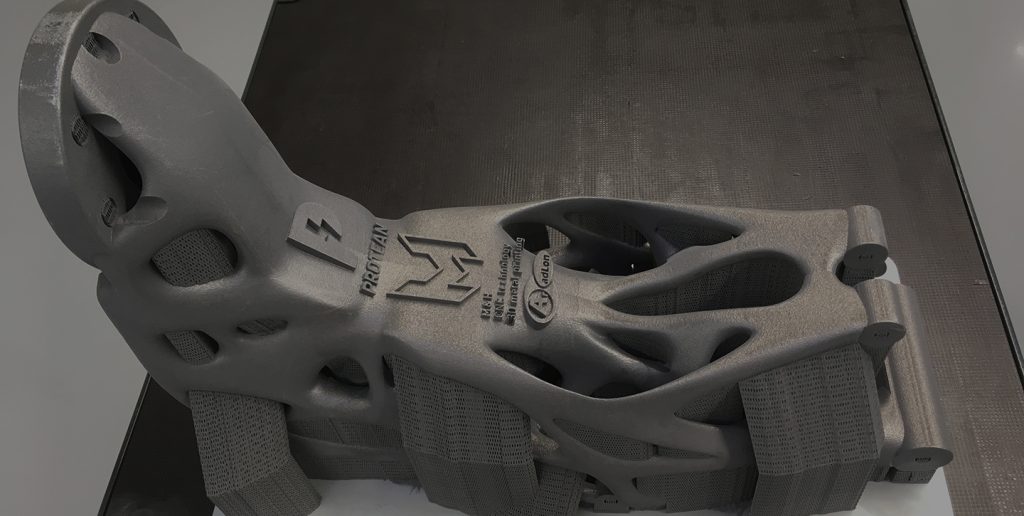New software tools designed to enhance 3D printing technology, and particularly AI-based software, were a key theme during formnext 2019.
Inspire Print3D from Altair is a “fast and accurate toolset to design and simulate the manufacturing process for selective laser melting (SLM) parts.” Developed by the Solidthinking division of the multinational IT company, Inspire Print3D is the company’s lastest simulation tool It allows designers and engineers to use a thermo-mechanical approach to generate designs then modify and evaluate by adjusting process variables.

Maintaining the additive manufacturing advantage
One advantage additive manufacturing confers over traditional processes is the ability to produce parts at strictly the required quantity, rather than say injection molding which has minimum production runs in the hundreds, and often thousands. However, this advantage can be swiftly eroded if multiple print runs are made during the process of finding the optimal way to 3D print a component. With this in mind simulation software is an attractive proposition that should free-up machine time, reduce material wastage and even enhance the final design.
James Dagg, Altair chief technology officer, design and simulation solutions said, “Inspire Print3D is the latest of our manufacturing tools, and we are very excited to present it to the design engineering and additive manufacturing communities.”
“With Inspire Print3D, companies can now reduce development and manufacturing costs by minimizing part supports and reducing material usage, print times, and post-processing.”
Software to prevent part deformation, delamination, and overheating
Metal additive manufacturing takes place in a high-energy system, with a considerable number of variables that can affect the final component. Experienced engineers and designers will take into account these variables to account for factors such as residual stresses and material characteristics that can lead to faults such as part deformation or separation of layers aka delamination. Altair says that Inspire Print3D is able to detect and correct such flaws.
The key features of Inspire Print3D include:
Part and Support Design – Generate support structures as part of the design process; interactively create and edit supports within the same environment as the designed part.
Easy-to-Learn Environment – The intuitive, process-driven user experience enables users to gain deep manufacturing insights quickly, driving faster and better design decisions.
Printing Analysis – Run the embedded thermo-mechanical solver to accurately simulate the entire printing process from building and cooling to cutting and springback.
Defect Identification – Easily detect and plot defects including large deformation, excessive heating and delamination to aid design or process modification.
Ready for Printing – Assess parts, layer-by-layer, to validate geometry even before any 3D printing analysis is performed, then export a file containing the prepped part and supports.
Dr. Jukka Pakkanen, additive manufacturing specialist at M&H CNC-TECHNIK GMBH, said, “M&H has been using Altair Inspire for additive manufacturing generative designs for several years and every year we strive to improve our designs.”
“The introduction of Inspire Print3D adds new possibilities and greatly enhances the capabilities for us to evaluate our designs and customer parts prior to manufacturing in order to react accordingly to any arising problems upfront. Failed prints are expensive because you may lose money in all areas like raw material, machine time, labor, and more. Being able to make unique parts correctly the first time is a competitive advantage promised with Inspire Print3D.”
Want the latest 3D printing news? Subscribe to the 3D Printing Industry newsletter, follow us on Twitter and like us on Facebook.
Visit 3D Printing Jobs to find your next additive manufacturing job or hire to expand the team. Our 3D printing jobs site is free for both employers and job seekers.
Featured image shows metal prints made using Inspire Print3D and SLM metal addtive systems. Photo via Altair.


